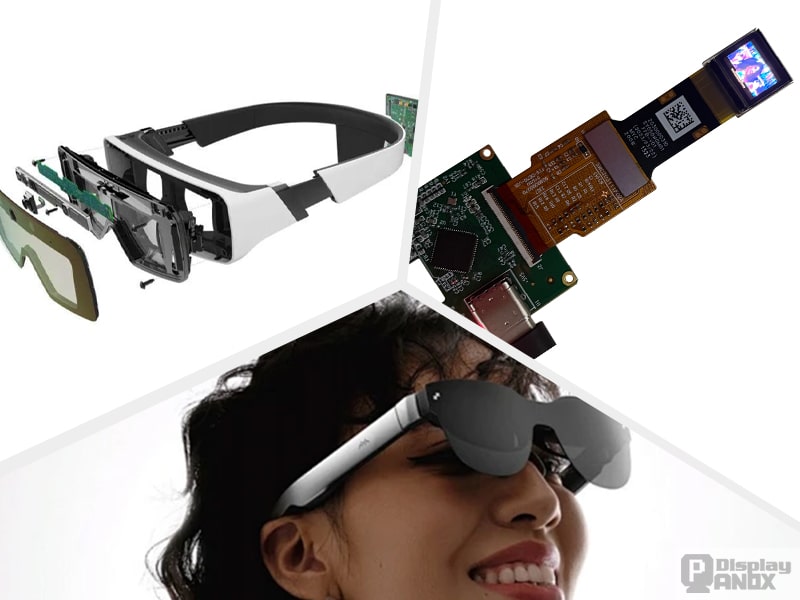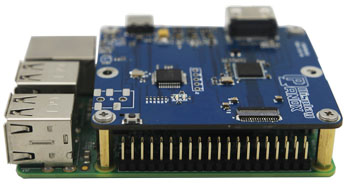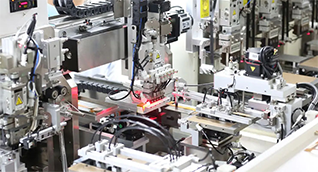
Micro OLED represents a breakthrough in the micro display industry. Built on single-crystal silicon substrates and fabricated through mature CMOS processes, Micro OLED achieves exceptional pixel density, high reliability, and unprecedented lightness. These advantages make Micro OLED display technology the leading solution for high-end VR, AR, and other near-eye systems—far surpassing VR products that still rely on conventional LCD panels.
1. Ultra-Fine Imaging: Silicon-Based Precision at Micro Scale
Micro OLED displays—also known as micro OLED screens or OLED microdisplays—are fabricated on a single-crystal silicon wafer that integrates the pixel driver, row/column circuits, SRAM, and T-CON directly on-chip.Pixel sizes are one-tenth of traditional display devices.
Image sharpness, clarity, and color vibrancy are dramatically enhanced.
Fewer external connections improve durability and signal integrity.
This high-density structure enables micro OLED microdisplays to achieve near-eye visual quality comparable to large AMOLED displays but with far smaller physical dimensions.
2. Advantages Over Traditional AMOLED
Micro OLED offers multiple technical upgrades compared to standard AMOLED:
Higher Manufacturing Yield
Uses mature IC manufacturing lines with yields exceeding LTPS panels.
Better Material Stability
Single-crystal silicon ensures higher mobility, longer lifetime, and more stable performance.
Lower Production Barrier
Only a 200 mm × 200 mm OLED deposition & encapsulation system is needed, fully compatible with 8-inch wafers—without requiring high-generation display fabs.
Small Size, Big Experience
Despite its compact form, a Micro OLED display provides immersive near-eye imagery equivalent to large AMOLED panels.
3. Advantages Over Other Micro Display Technologies
Micro OLED stands out across core performance metrics:
20% Lower Power Consumption
Compared to LCD micro displays, reducing the load on device batteries.
Broad Operating Temperature
Performs stably from −46°C to +70°C without added heating/cooling modules.
Exceptional Contrast
Offers 10,000:1 contrast, vastly outperforming LCD’s 60:1.
Ultra-Fast Response
1 μs pixel response—1,000–1,500× faster than LCD—greatly reducing visual fatigue in VR/AR.
Related : Why AR MR Glass Need High Brightness Micro OLED?
4. Market Outlook: Rapid Global Expansion
Driven strongly by Chinese manufacturers, global Micro OLED shipments are projected to grow at a 65.21% CAGR (2021–2027). As Micro OLED screens expand into both consumer and enterprise markets, their strategic value continues to rise.
5. Technology Integration: CMOS × OLED at Its Highest Complexity
Micro OLED is the result of combining semiconductor CMOS technology with OLED optoelectronics, requiring dense integration of wet and dry fabrication processes.
5.1 Silicon-Based IC Design
Includes pixel drivers, DAC circuits, addressing modules, and interface logic—all produced in advanced foundries.
5.2 OLED Micro-Cavity & Color Technologies
Top-emission structures, high-reflectance anodes, and full-color OLED processes form the core of the micro OLED display stack.
5.3 OLED Encapsulation
Utilizes thin-film encapsulation and glass cover bonding to ensure long-term moisture and oxygen resistance.
5.4 System-Level Display Integration
The final step turns the silicon-based OLED wafer into a functional micro OLED microdisplay module ready for VR/AR deployment.
6. Device Structure: A Precision Layered Architecture
A Micro OLED display incorporates:
Single-crystal silicon substrate (CMOS driver circuits)
High-reflective metal anode
Layered organic stack (HIL, HTL, EML, etc.)
Thin-film encapsulation + protective glass
Because silicon is opaque, Micro OLED uses a top-emission architecture to maximize brightness and optical efficiency.
7. Driver IC Architecture: High Integration at 0.18 μm
The driver IC includes:
Pixel circuits
Row/column drivers
DAC units
I²C communication
A built-in temperature sensor
Real-time voltage compensation ensures consistent brightness and color under different environmental temperatures.
8. Industry Landscape: Fast Development, Limited Global Suppliers
Only a few companies worldwide manufacture Micro OLED at scale:
International Leaders
Sony — the only supplier with mature mass production
eMagin (USA) — military applications
MicroOLED (France) — military/industrial optics
Rising Chinese Manufacturers
Actively pushing forward R&D and pilot production:
SeeYA (Hefei)
BOE (Beijing / Chengdu)
Microview (Kunshan)
Olightek
BOE achieved mass production of an 8-inch silicon-based OLED line in 2019, while SeeYA launched a 12-inch Micro OLED project in the same year.
China is still developing in key areas such as:
Color filter processes
Thin-film encapsulation
Silicon-based digital drivers
Core manufacturing equipment
But rapid progress is underway.
















